Shrine families: Gaddi Nasheens’ hold on voter base slipping away
Traditional shrine families face challenges as social media alters voting dynamics
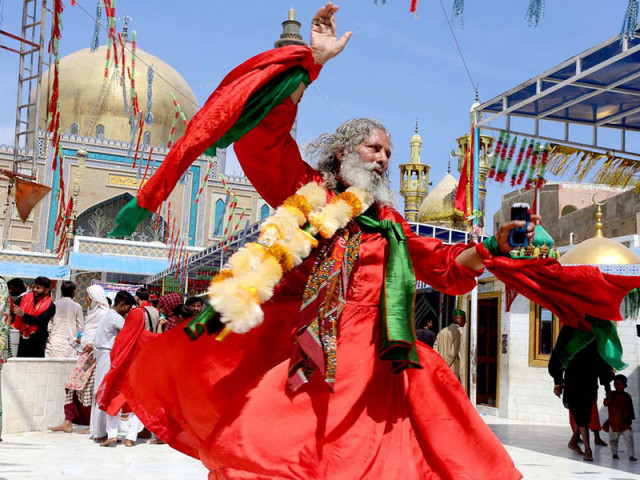
At the crossroads of electoral change, Gaddi Nasheen Pirs, traditionally seen as architects of the nation’s political story, are now redefining their roles with socio-economic transformations. A journey that dates back to the Mughal era is undergoing recalibration by these spiritual leaders.
Traditionally aligned with power centres, the heirs of the saintly lineage, representing the traditional Barelvi school, face the challenge of syncing with evolving public sentiments. The historic sway they held over ‘mureeds’ (disciples) is now encountering a reshaped political terrain, necessitating direct engagement with voters.
Many prominent Gaddis have shown a tendency to switch electoral allegiances when deemed necessary. Their influence has traditionally hinged on the unwavering support of their ‘mureeds’ who adhered to the voting recommendations of their spiritual leaders. However, as the population grew and constituency sizes expanded, Pirs found themselves compelled to actively engage with voters to secure their support.
In electoral politics traditionally, their sphere of influence extended to rural areas, primarily in Punjab and Sindh provinces, where most major Gaddis are located.
While historically rooted in rural strongholds, the political landscape has morphed, turning villages into towns and rural spaces into semi-urban hubs. The proliferation of social media, economic prosperity, and improved education accessibility have redrawn the contours of influence.
While there hasn’t been an independent study to precisely gauge the impact of these socio-economic changes on the Pirs’ vote bank, a closer look at the country’s recent electoral history reveals potent challenges in maintaining their political influence alongside spiritual standing.
These challenges have intensified, particularly since the last general elections, with the emergence of Tehreek-e-Labbaik Pakistan (TLP), a hardline Barelvi party founded to tackle the issue of preserving the Namoos-e-Risalat (ensuring the utmost respect for the Prophet PBUH) and protect the country’s blasphemy laws – issues that are highly sensitive for Barelvis.
Read Shifting sands of power in Multan
The rising influence of TLP poses a serious threat to the traditional stronghold that Gaddi Nasheens have maintained over their followers in electoral matters. The transformation in the political landscape, coupled with the growing resonance of TLP’s messaging, prompts an exploration into whether Gaddi Nasheens’ historical influence on the electoral choices of their followers is now under renewed scrutiny.
In the last elections, TLP presented a significant surprise. The party, founded in 2015 on the back of support for the issue of hanging Mumtaz Qadri, a serving police bodyguard of sitting Punjab governor Salman Taseeer, TLP secured 2.2 million votes in the 2018 general elections and won two provincial assembly seats in Sindh.
Moreover, it altered the outcome in around 20 National Assembly seats, where winning margins were less than TLP votes. The hardline party also influenced results in another 17 constituencies, securing second place in three National Assembly constituencies and standing at number three in around 70 constituencies for the National Assembly and provincial assemblies of Punjab and Sindh.
These results showcased an unprecedented influence of the Barelvi vote that had never been pronounced in the past like this. While Jamiat Ulma-e-Pakistan (JUP) and some other Barelvi parties in the past secured few seats and influenced voting patterns in certain pockets, TLP demonstrated a much broader countrywide impact.
As the upcoming elections approach, questions arise about TLP’s performance without a singular agenda item, unlike in 2018 when they campaigned to protect the country’s blasphemy laws and the finality of prophethood.
Reports suggest that TLP back then also enjoyed tacit support from influential quarters to challenge PML-N, which had fallen out with the powers that be of the country.
This time PML-N seems to be the first choice of powerful quarters to form the next government. It has made alliances and seat adjustments with a number of parties and groups to ensure its dominance in the centre and Punjab.
TLP has fielded 223 candidates for the national assembly, more than PML-N’s 212 and PPP’s 219 across Pakistan for the 266 directly elected seats. In the absence of their firebrand leader Allama Khadim Rizvi and the aforementioned issues, it is yet to be seen if TLP will act as a fringe party in this month’s polls or if it emerges as a serious player capturing the votes of major parties and the majority Barelvi vote on which Pirs traditionally had their banking.
Amidst the prevailing uncertainty, spiritual leaders, the Pirs, are delicately navigating the intricate balance between tradition and contemporary dynamics. The backdrop of this electoral scenario witnesses a significant shift in traditional patterns of choices of Pirs. Below is a summary of influential Gaddis and their party preferences for the upcoming elections.
Shrine Bahu Sultan – Central Punjab (Jhang)
This shrine holds considerable sway in Jhang’s political landscape. Notable Pirs: Sahibzada Mehboob Sultan and Sahibzada Amir Sultan and contesting for National Assembly seats NA-108 and NA-110 respectively.
Shah Jeevna – Jhang
The Gaddi Nasheen of a significant shrine in Jhang former federal minister Faisal Saleh Hayat is contesting for National Assembly and Punjab Assembly seats NA-108 and PP-125 on a PML-N ticket after leaving PPP a few weeks back.
Shrine of Sial Sharif – Sargodha
In the court’s electoral politics especially in Punjab’s politics, this shrine has historical significance. Gaddi Nasheens of this shrine have also been elected multiple times for the National and Provincial legislatures. Pir Naeem Uddin Sialvi is contesting for the Punjab Assembly seat in the upcoming elections. He was PTI’s candidate for National Assembly in 2018 but he joined PPP in January 2022.
Taunsa Sharif – South Punjab
Khawaja Sheraz and other members of this significant Gaddi in South Punjab are contesting for the National Assembly and Punjab Assembly. Sheraz would be contesting for National Assembly seat NA-183. He is backed by PTI. His uncle Khawaja Salah Uddin Akbar is contesting from PP-285, another close relative Khawja Nizam ul Mehmood is contesting on the PML-N ticket while another family member Khawja Muddasir is contesting for the National Assembly seat on JUI-F ticket.
Dargah Jalalpur Sharif – Central Punjab
Central Punjab shrine with political importance has also played an important role in the country’s politics in the past, however no direct descendant in the current race for the national legislature.
Gilanis of Multan
PPP’s face in South Punjab, former prime minister Syed Yousaf Raza Gillani is contesting from NA-148, while his sons Ali Musa Gillani from NA-151, and Abdul Qadir Gillani from NA-152.
Shrine Bahauddin Zakariya Multan
Former foreign minister Shah Mehmood Qureshi is currently in jail and has been convicted along with PTI founder Imran Khan under the official secret act in the Cypher case. His son Zain Qureshi is contesting from NA-150, while his daughter Mehr Bano Qureshi will be facing Ali Musa Gillani in NA-151. They are independent candidates backed by PTI.
Shrine Khawaja Fareed Pakpattan
Two important politicians who derive their support from Gaddi Nasheens of this shrine, the brothers of Khawar Manika, former husband of Imran Khan’s wife, Ahmed Manika and Farooq Manika are contesting on PML-N ticket for NA-139, and PP-193 respectively.
Dargah Hazuri Kasuri – Central Punjab
Gaddi Nasheen of this shrine, Pir Imran Ahmed Shah is contesting for the National Assembly on PML-N ticket from Sahiwal.
Pir Amin ul Hasnaat of Bhera Sharif who contested the last election on the PTI platform is not in the race this time.
Important Gaddi’s of Sindh province in the run for 2024 elections:
Bharchundi Dargah, Ghotki
Mian Abdul Haq Mitthu who is widely accused of forced conversions of non-Muslims is contesting for the National Assembly seat from Ghotki.
Gaddi Nasheens from Khairpur
Pir Niaz Hussain Shah representing Gaddi of Pirs of Rani will be facing Pir Sadaruddin Shah Rashdi of Pir Pagara family for NA-203. Two other members of the Pagara family Pir Ismail Shah Rashdi are running for Sindh Assembly’s seat PS-28 and Pir Rashid Shah Rashdi for PS-31 on GDA tickets.
Hala Shrine
Sajada Nasheeen of this shrine Makhdoom Jamil ul Zaman is contesting from NA-216 Mityari while Makhdoom Mehboob Zaman is in the contest for PS-56 on PPP tickets.
The diverse range of political parties on whose platforms these Gaddi Nasheens are vying for seats illustrates a shift in traditional political dynamics. Historically, political parties would seek the endorsement of Pirs for their support. However, the current scenario reflects a reversal, indicating that Pirs now actively seek party tickets to maintain their relevance in the evolving political landscape.
The choices of these influential Gaddi Nasheens are poised to shape the political landscape after the elections, providing a nuanced interplay between tradition, spirituality, and contemporary political dynamics.
Sabookh Syed, a journalist and researcher closely monitoring issues related to religious parties and extremist groups, notes that Gaddi Nasheens have traditionally aligned themselves with the powers that be, playing on their whims.
Read more South Punjab electoral scene dominated by elite
At the same time, these Pirs have typically prioritized local interests over any party’s national ideology. They often sided with a party that caters to their local concerns, given that their economic ties revolve around local groups and parties.
More organised religious parties of the Deobandi school of thought, such as Jammat-e-Islami and JUI-F, have been criticising the Pirs for using the Namoos-e-Risalat issues publicly while supporting secular parties like PPP and PML-N, who, at times make attempts aimed to amend laws on matters dear to Barelvis.
He believes the emergence of TLP has posed a challenge for many Pirs. TLP, by championing the cause of Khatam-e-Nabuwwat, has shifted the dynamics by becoming the self-proclaimed sole guardian of laws related to the finality of the Prophet (PBUH).
Instead of making any other traditional Gaddi as the centre of their politics, they propagated Mumtaz Qadri’s ideology, with his shrine at the centre, and after the demise of the party founder Allama Khadim Rizvi, they integrated his shrine into their assertive political stance.
Dr Adeel Malik, an academician at Oxford University, offers a different perspective. He suggests that the power of traditional shrine families is increasingly contested due to the penetration of social media and the breakup of household votes.
“The upcoming elections provide an important avenue to test how these new influences are eating into the vote banks of powerful Gaddis,” says Dr Malik.

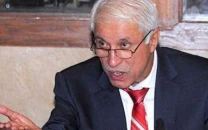
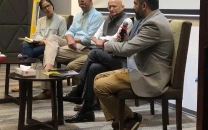



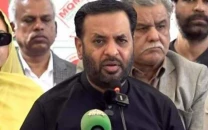



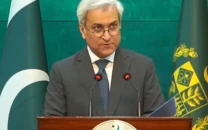







COMMENTS
Comments are moderated and generally will be posted if they are on-topic and not abusive.
For more information, please see our Comments FAQ